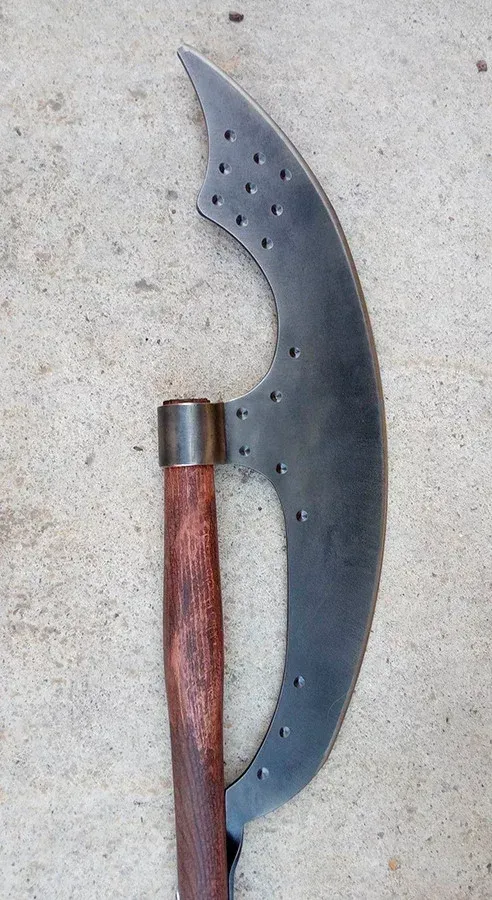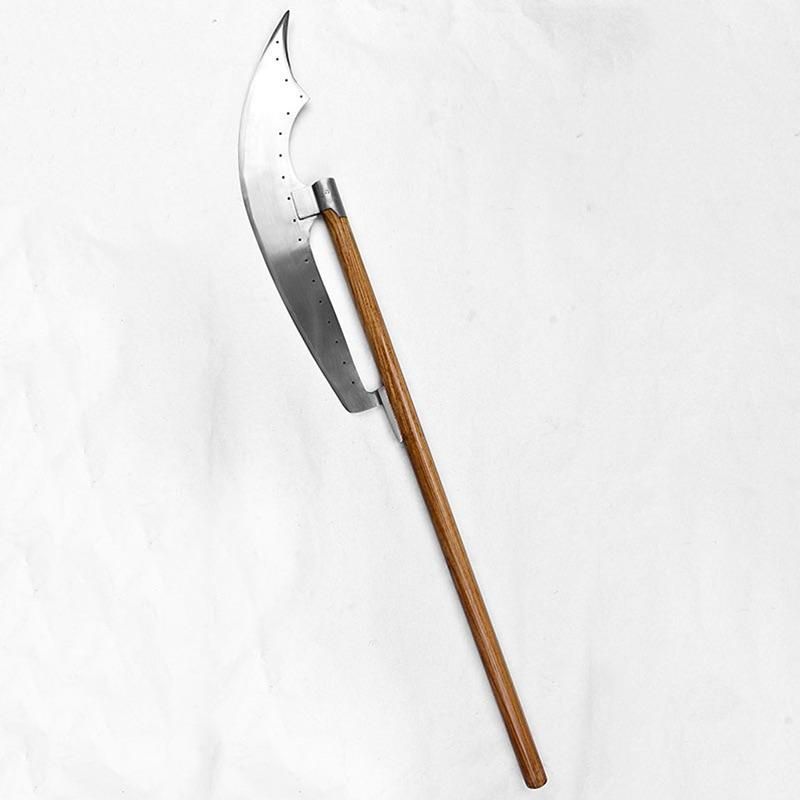Shopping Cart
There are no more items in your cart
What is a Bardiche?
The bardiche, also known as the berdiche, is a historically significant weapon that combines the characteristics of an ax and a pole weapon. Primarily used from the 14th to the 17th centuries in regions such as Eastern Europe, especially in Russia, it is a perfect example of the evolution of weaponry during the Middle Ages and the Renaissance.
Characteristics of the Bardiche
- **Structure**: The bardiche features a blade reminiscent of a war ax or a glaive. The uniqueness of this weapon lies in the blade being attached to a pole at at least two points, allowing it to be gripped behind the blade, acting as a kind of guard. This design provides additional stability and control for the user. - **Length**: The bardiche blade typically measures between 60 to 75 centimeters. As for the pole, it can measure from one meter to one meter eighty in length, granting the weapon considerable reach in combat. - **Usage**: Noted for its versatility, the bardiche was used for both slashing blows and thrusting, demonstrating its effectiveness in close-quarter combat.

Origins and History
- **Origin of the term**: The word "bardiche" is an adaptation of the Russian "berdiche," which literally means "pole ax" or "long ax." - **Presence in Eastern Europe**: This type of weapon was distinctively popular in Eastern Europe, with extensive use in Russia among infantry ranks. Its design was ideal for the type of battles and fighting styles predominant in the region. - **Spread**: Starting in the 15th century, the bardiche began to spread to other territories such as Austria, Sweden, and the Polish-Lithuanian region, gaining ground in the arsenals of heavy infantry. - **Use in Russia**: During the reign of Ivan the Terrible, the bardiche was solidified as the main service weapon of the palace guard, known as the streltsy.Use in Combat
- **Versatility on the battlefield**: The bardiche was not just a cutting weapon. Its structure also allowed it to be used as a support tool for firing muskets, serving as a leveling device to improve shooting accuracy. - **Functionality**: In combat, it provided both a powerful strike and the capability of being used as a spear, allowing the warrior to keep their opponents at a certain distance.





























